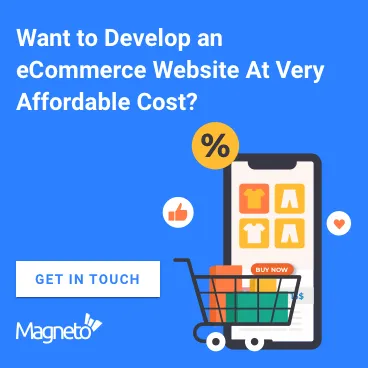Developing an Online Store: 5 Crucial Things to Consider in 2021-22

Are you considering building an online store for your existing business? Or maybe you are an aspiring entrepreneur and want to do things online right away?
In any case, having an online store makes pretty good sense. As for 2021, there are around 2.14 billion consumers who prefer the online shopping experience instead of going to an actual store. This number marks a total of 63% of all sales, and they all take place somewhere on the web.
The numbers speak for themselves. Apparently, modern consumers pick convenience of their own homes over shelves, showcases, and crowds of buyers that can be found in a physical store. Thus, if you want to find your place in this niche, it is vital to give your prospects a chance to enjoy their shopping without leaving the comfort of their homes.
Who can benefit from this? Literally any business out there. The biggest benefit of the web is that it enables entrepreneurs to sell pretty much any product or service. Thus, be it a writing service where students come asking “write my essay for me cheap,” a law firm, a marketing company, or any other kind of business, it is always a good idea to enter the online marketplace.
But how can you do this? There will be plenty of things to take care of before you start selling, including branding, marketing, and many others. But, it all starts with crafting an actual website. But, it all starts with crafting an actual website, so how to build a website and what to prepare? This article will give you an idea on what to consider when building it. This article will give you an idea on what to consider when building it.
Is Coding Worth It?
When you decide to craft an e-commerce website, you basically have two major choices:
- To have it uniquely coded for you;
- To use a special platform to build it with ease.
So, which way is the right way? Clearly enough, there can’t be a one-suits-all answer to this question. The choice should be made depending on numerous factors, including your niche, business needs, goals, budget, etc.
But, one thing you need to recognize early on – most startups, as well as many established businesses, opt for using platforms due to a number of reasons. Namely, it is much faster, less stressful, and also cheaper rather than hiring someone to code a unique website for you. At the same time, the profitability of a store is not directly affected by the option you choose.

You can run a successful site that was built using a platform. Same way, you can fail even if it was uniquely coded for you.
What Platform to Pick?
If you choose to use a platform rather than code your site, this will bring you to another stumbling point. Which one is best for you?
Today, there are plenty of great platforms for e-commerce. And they all are different – having their own pros and cons, coming with different features, and at different price points. So, making the right choice can be rather hard.
To help you get on the right track, here is a list of the most trusted and widely-used e-commerce platforms:
- Shopify
- Wix
- WooCommerce
- Magento
- BigCommerce
- X-Cart
- PayPal
- Weebly
The list could go on and on. But, these are among the most popular picks among businesses.
What Payment Gateways to Use?
When developing your online store, chances are that you will want it to enable you to process a wide range of transactions securely and access your money without let or hindrance. Thus, another crucial thing to consider is what gateway for handling payments to use.
What factors to look at when making your pick? It is vital to choose gateways that will be convenient, safe, and capable of fulfilling your business’s needs. Also, it is important to keep your budget in mind, as most gateways take a fee for their use. And, of course, you want it to accept different payments, including Apple Pay, credit cards, PayPal, and others.
If you don’t have any options yet, take a close look at the following gateways:
- Braintree
- Stripe
- PayPal
- Authorize.Net
- Amazon Payments
Each of these is considered trustworthy and secure. But, be sure to carefully assess all the pros and cons to make the right choice.
How to Set Up the Delivery Process?
Unless you are delivering services, which are obviously not physical, another challenge you’ll need to overcome is the organization of the delivery process.
In order to create positive customer experiences, you want to make sure that the delivery is fast, seamless, convenient, and effective (both in terms of general organization and price). So, what option to choose?
The answer will depend on numerous factors. In fact, there are many shipping companies worth considering. So, the only tip we can give you here is to take your time to define the options, weigh all pros and cons, and pick the most suitable one.
How to Craft an Effective Sales Funnel?
Finally, one more thing you want to consider early on is your sales funnel. Basically, the core idea behind it is to create a “route” that would take your leads all the way through your site, until they become actual buyers.
There are many tactics and techniques you may use for this purpose. But, let us share a couple of the most vital tips for crafting an effective sales funnel:
- Create a simple buying process;
- Make sure your site is thought out well;
- Showcase your services or products in a clear and easy manner;
- Add detailed and clear product descriptions;
- Provide videos, images, and other content that drives attention and explains the benefits.

The Bottom Line
Hopefully, each of you will find this guide helpful.
In conclusion, let’s quickly recap the top things every entrepreneur should decide on when building an online store:
- Whether to rely on coding or an e-commerce platform;
- What platform to use;
- What are the best payment gateways;
- How to ensure a well-established delivery process;
- How to “route” leads through your funnel effectively.
If you consider it all, you will be doomed to succeed! So, go ahead and get your brand out there.


